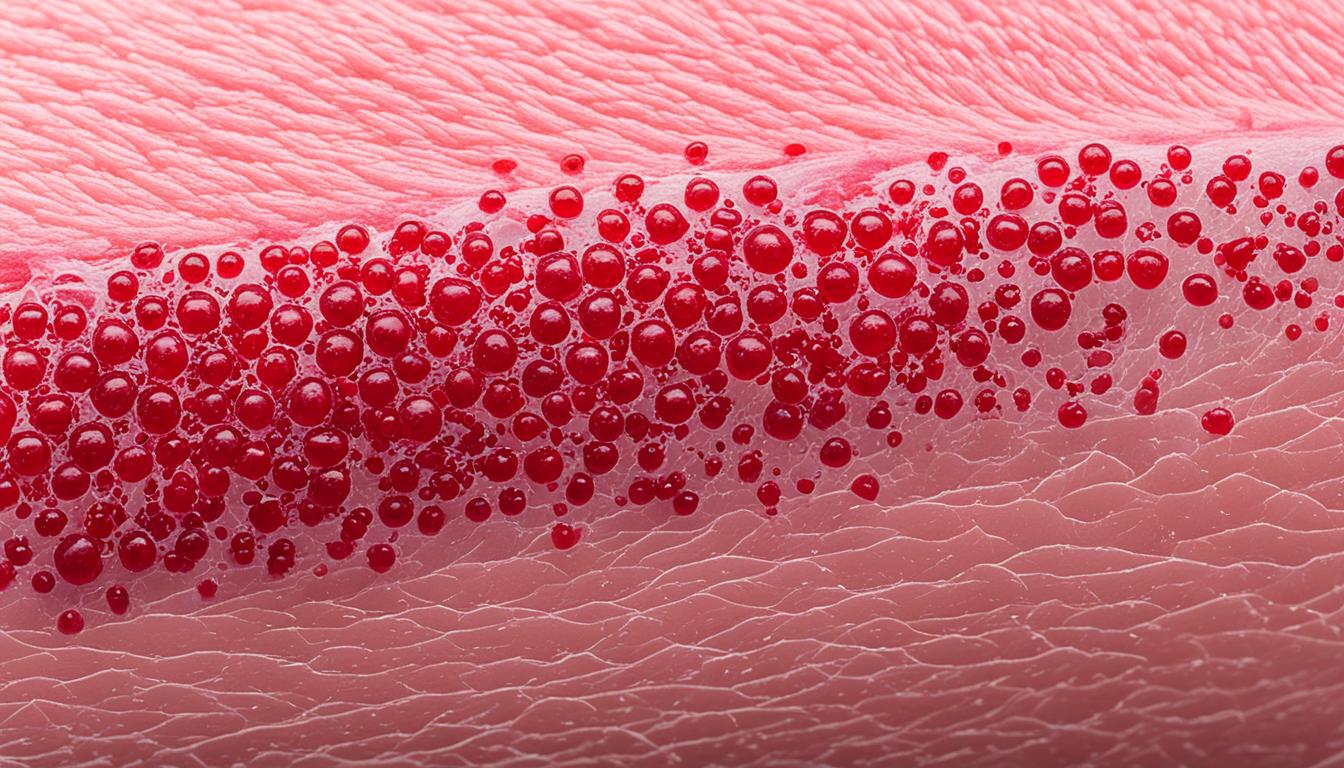Ingrown hair is when hair curls back or grows the wrong way into the skin. It’s seen mainly on the legs and face. Symptoms include redness, itchiness, and painful bumps. These may be due to bad shaving or tight clothes.
Having ingrown hairs can be bothersome. But, treatments and ways to prevent them are available. Knowing why these hairs happen and their signs helps deal with them sooner.
Key Takeaways:
- Ingrown hair can occur on any part of the body where hair grows.
- Common symptoms include redness, itching, and the formation of painful bumps.
- Causes of ingrown hair include improper shaving or waxing techniques, tight clothing, and genetic factors.
- Prevention measures involve exfoliating the skin, using proper shaving techniques, and wearing loose clothing.
- If ingrown hairs become infected or persistent, medical intervention may be necessary.
Folliculitis Keloidalis: Causes, Symptoms, and Treatment
Folliculitis keloidalis often affects the back of the neck. It’s seen more in dark-skinned adult men of African descent with curly hair. They experience itchy bumps, pimples, and scars in that area.
This problem starts with hair fibers getting stuck and causing irritation. The skin reacts by forming bumps and sores. If this keeps happening, it leads to scarring.
To treat this issue, the first step is avoiding tight clothes. Then, cleaning the area with special soaps and using specific creams can help. In some cases, injections, pills, or laser treatments might be needed. And, rarely, a surgery could be the best option for severe scarring.
Treatment options for folliculitis keloidalis
| Treatment | Description |
|---|---|
| Avoiding tight clothing | Wearing loose, breathable clothing can help prevent further irritation of the hair follicles. |
| Antimicrobial cleansers | Using cleansers with antimicrobial properties can help combat bacterial growth and reduce inflammation. |
| Topical steroids | Applying topical corticosteroids can help reduce inflammation and relieve itching. |
| Intralesional injections | Injecting corticosteroids directly into the affected areas can help reduce inflammation and scarring. |
| Oral antibiotics | Taking oral antibiotics can help treat any bacterial infections that may be contributing to folliculitis keloidalis. |
| Laser-assisted hair removal | Using laser technology to remove unwanted hair can help prevent further ingrown hair and reduce inflammation. |
| Surgery | In more severe cases, surgical intervention may be necessary to remove extensive scarring and improve the appearance of the affected area. |
Seeing a dermatologist is key for anyone dealing with this condition. They can provide the right diagnosis and treatment, making life better by easing symptoms and stopping the problem from getting worse.
Stem Cell Therapy for Ingrown Hair Disease in Thailand
Stem cell therapy is a new and hopeful treatment for skin problems, like ingrown hair disease. These special cells can turn into different types and help grow new tissue. This makes them a great option for people who have this issue. In Thailand, you can get stem cell therapy for ingrown hair disease. It brings new hope to patients who want a good treatment.
This new therapy moves stem cells right where they’re needed. They help grow new hair and fix the skin at the same time. Each treatment is unique to the patient, which helps make it work better.
The effects of stem cell therapy for this disease look really good. But, more studies and tests are needed to be sure it’s safe and does its job well. These efforts are important to make sure patients get the best care possible.
In Thailand, stem cell therapy is a modern way to battle ingrown hair disease. It uses the power of stem cells to improve hair growth and skin health. If you’re interested, talk to a trusted doctor. They can tell you more about how this innovative treatment can help and make you feel better about how you look.

